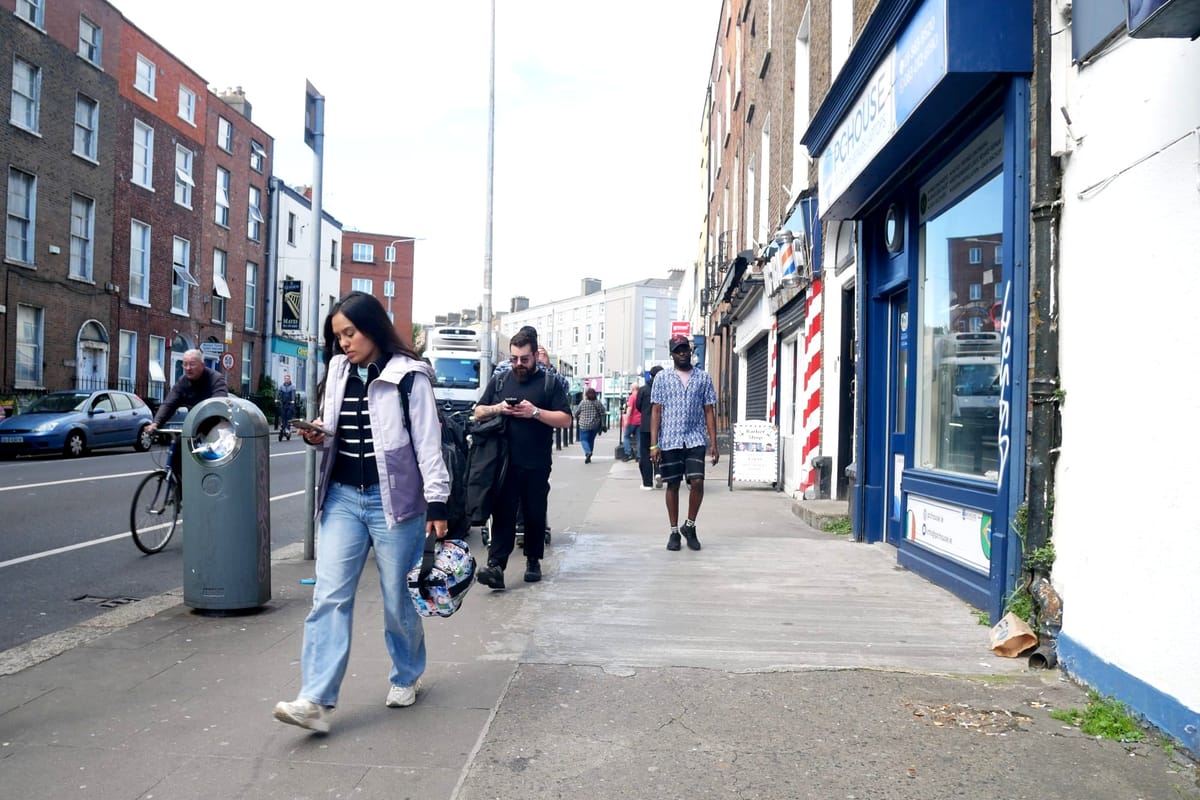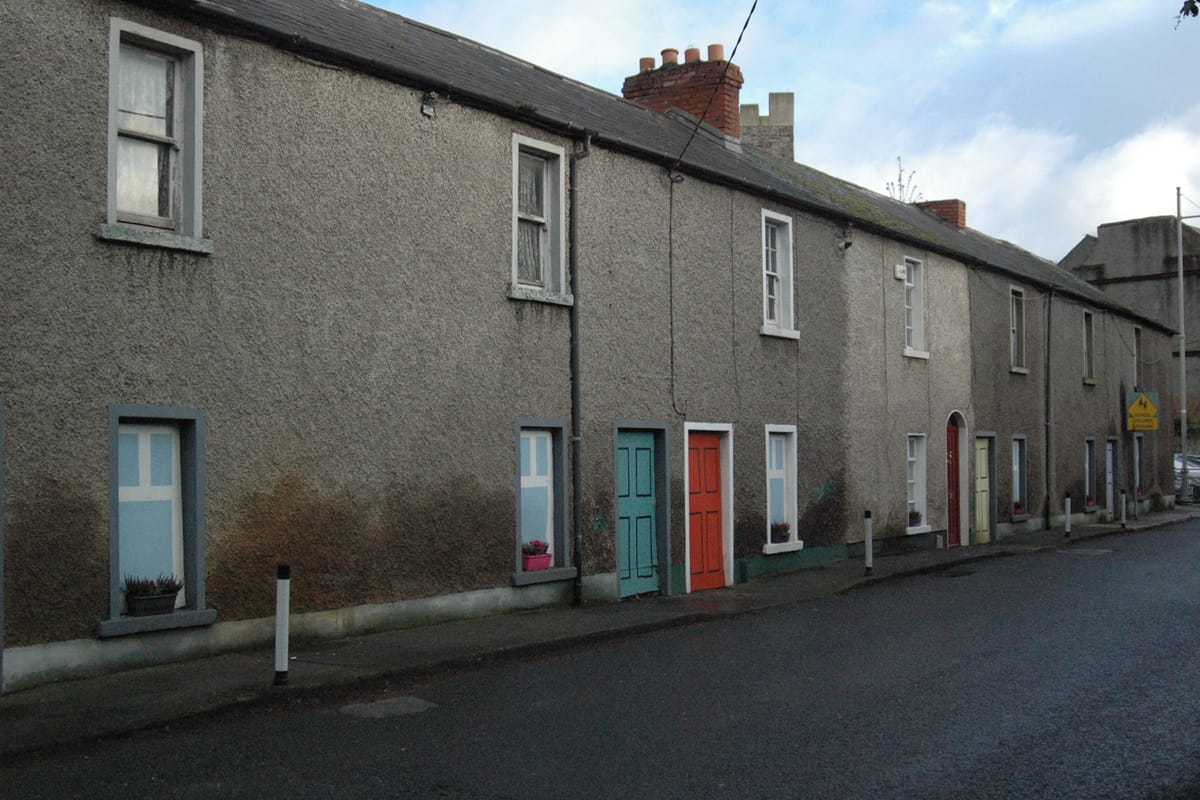Did the council follow the correct process to name Herzog Park back in 1995?
Or has Rathgar been living with Orwell Quarry Park all this time?
The council promised to start taking legal action against owners of derelict homes who don’t pay the levy going forward.

Earlier this month, the Minister for Housing, Fianna Fáil TD James Browne came out strong against dereliction and vacancy, condemning it as “anti-social behaviour” to leave properties idle.
Then, at a meeting of Dublin City Council’s Central Area Committee last week, a council official said the council was moving to a zero-tolerance approach to dereliction.
They had visited Limerick City and County Council, which enforces the rules more stringently, said Margaret Mooney, an administrative officer with Dublin City Council, at the meeting.
But at the same time as this tough talk, the council has paused its compulsory purchases (CPOs) of derelict buildings, according to a council spokesperson.
This is “in line with existing funding constraints and [the council] has chosen to redirect resources towards projects that will deliver the highest volume of homes”, they said.
On Tuesday, an opening statement by Dublin City Council Assistant Chief Executive Anthony Flynn at a meeting of the Oireachtas Joint Committee on Housing highlighted the same tension between a desire to tackle dereliction, and constrained funding.
Flynn pointed to the work of the council in drawing up a new holistic strategy to deal with dereliction and vacancy in the city. But he also asked if the central government would consider various changes to provide the council with more money to help do that.

Later the same day, the Department of Housing sent out a press release talking about €150 million in funding to councils to acquire long-term vacant and derelict buildings and sites, including by CPO, for reuse or sale.
Of that, Dublin City Council was allocated €10 million to do up 16 properties, show department figures. There are nearly 150 properties on the council’s derelict sites register.
Of course, compulsorily buying up derelict properties isn’t the only way the council plans to go about reducing dereliction in the city.
At the 14 October meeting of the Central Area Committee, Margaret Mooney, an administrative officer with the council, filled in a few more of the gaps on how the council plans to accelerate its response.
Council officials recently visited Limerick City and County Council, which takes a “zero tolerance” approach to dereliction, Mooney said.
“We have taken a leaf out of their book and we are trying to be a bit more proactive and not as lenient as we were in the past,” she said.
Up to now, the council didn’t add sites that had planning permission to the derelict sites register either, but that it would start doing that going forward.
Sites entered on the register are subject to an annual derelict sites levy of 7 percent of market value.
Of course, up to now, “we usually just put a charge with Tailte Éireann, which we hope then will recoup the levies at a later stage”, she said. “But we are going to be more proactive.”
The job of collecting these levies more proactively may eventually be taken away from the council and given to the Revenue.
Finance Minister Paschal Donohoe said in his Budget 2026 speech he intended to introduce legislation to replace the existing council-controlled Derelict Sites Levy with a new Derelict Property Tax, to be collected by the Revenue.
If the levy or tax doesn’t move the owner to do up the property or sell it on, the council can compulsorily purchase it, Mooney said. “Anything that is on the register is available to the council for acquisition under the legislation.”
But in a report to the same meeting, the council also said that it had paused the compulsory purchase of derelict homes.
“It is the Council's position that dereliction constitutes a violation of social responsibility and, with the support of the elected members, is moving towards a zero-tolerance approach to such behaviour,” says a council spokesperson.
Still, it has paused compulsory purchases of derelict properties due to funding constraints, she says.
“Rather than spreading efforts thinly across numerous small properties, the focus is on strategic acquisitions and interventions that can unlock significant housing capacity,” says the spokesperson.
CPO-ing a property is one thing, but bringing it back into use is another.
The council owns 26 derelict properties, some of which it’s had for as long as eight years, according to a written response issued earlier this month to Fine Gael Councillor Danny Byrne from the council’s chief executive, Richard Shakespeare.
It should focus on doing something with those, Byrne says.
“The council needs to be more decisive,” says Byrne, by phone on Tuesday. “There is no point in sitting on it when it could be a home for someone.”
Since that response was issued, Dublin city councillors have agreed a framework for how the council will manage derelict properties it owns.
If it can’t afford to develop them itself, it will offer them first to the Land Development Agency, then to a housing charity, next to first-time buyers, and lastly to private developers, the framework says.
Since 2017, the council has compulsorily purchased 54 properties. Of those, 47 became social housing, says a council spokesperson.
At the Central Area Committee meeting, Sinn Féin Councillor Séamas McGrattan welcomed the news that the council had brought most of the properties back into use as social homes.
“That has to be the end product here,” McGrattan says. “We need to be able to put resources into this; we need to be able to buy these houses back.”
However, there are still some the council owns that haven’t been brought back into use.
Among the derelict properties that have been owned by the council for years is 144 Harold’s Cross Road.
The council bought that in April 2018, says Shakespeare’s written response, but it hadn’t decided what to do with it yet.
“This property has severe structural issues which are currently being monitored by our structural team,” it says.
On Thursday, a council spokesperson said that 144 Harold’s Cross has actually already been demolished.
“The Council, due to the severe structural issues with NO. 144 were unable to develop this property without taking in the adjoining properties, which are in private ownership and currently the subject of development works,” she said.
Meanwhile, since October 2017, the council has owned 6 Creighton Street in the south Docklands.
It is trying to acquire a neighbouring property to renovate both at the same time, says the written response.
Since August 2019, the council has owned two houses in Connaught Street. In the last year, it discovered a structural issue, says the response. “This has been rectified, and the property is getting prepared for renovation.”
Meanwhile, since January 2019, the council owns 8 and 10 Ferguson Road in Drumcondra. “Under Part 8 Planning Housing received some additional recommendations which we are currently investigating,” says the response.
Byrne, the Fine Gael councillor, says the council needs to hurry up and bring all the homes back into use. He’ll keep an eye on it each month going forward, he says.
Sometimes the Department of Housing says it will fund the council to refurbish a derelict property to use as social housing, but then later changes its mind.
“In some cases, it is the Department of Housing’s fault,” says Byrne.
But if the department doesn’t fund the council to renovate the home for social housing, the council should sell it quickly, so that someone can live there, he says.
A sale is what Green Party Councillor Ray Cunningham says he is looking for, when it comes to Mulberry Cottages, the vacant and derelict row of homes that the council owns in Chapelizod.

On 17 October, he emailed councillors in the South Central Area to say he planned to put forward a motion suggesting the council sell these homes in line with the “waterfall” sequence of offers agreed at a meeting the previous evening.
So, offering it first to the LDA, and then to an AHB, and then to a first-time buyer – and finally to any private developer, he said.
He had met with council officials in the property department in June, and the council didn’t expect to be in a position to develop them in the next few years, he said.
“Some stabilisation work has been done, but the houses will remain empty, and fall further into disrepair, unless they are sold,” he said.
Yet the property department has not yet started the disposal process, he said.
That was “because any disposal has to be agreed by the council and they are worried that councillors will refuse”, wrote Cunningham.
Council officials are choosing to direct resources towards larger projects that will create more homes, said Cunningham later on the phone, which means that some of these smaller sites are just left idle.
At the hearing before the Oireachtas Joint Committee on Housing on Tuesday, Flynn, the council official, listed in his opening statement several changes the council would like the state to consider around funding to tackle dereliction.
One would be to encourage the Land Development Agency and housing charities to transform derelict properties into cost-rental homes for key workers, he said.
Another was to ringfence funding from the existing Residential Zoned Land Tax, and the proposed Derelict Property Tax, for the council area in which it was collected to fund urban regeneration.
Flynn also sought – among other measures – a multi-annual revolving capital fund to buy derelict sites and enable cost-rental homes at scale in the city, and clarification of liability and insurance for meanwhile use of vacant properties.
But Byrne, the Fine Gael councillor, says the council should get its own house in order. “They need to deal with that themselves before they are preaching to others.”